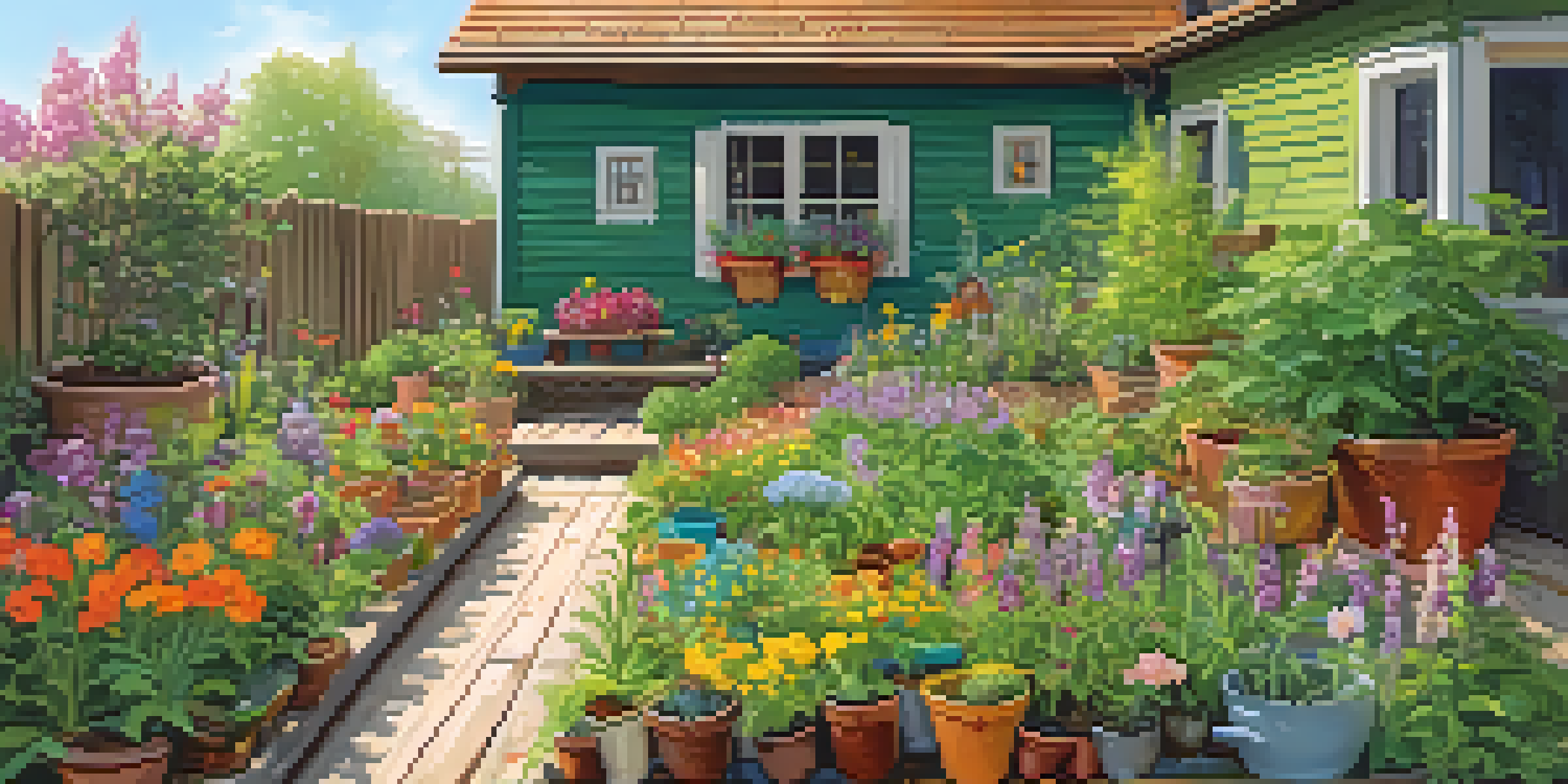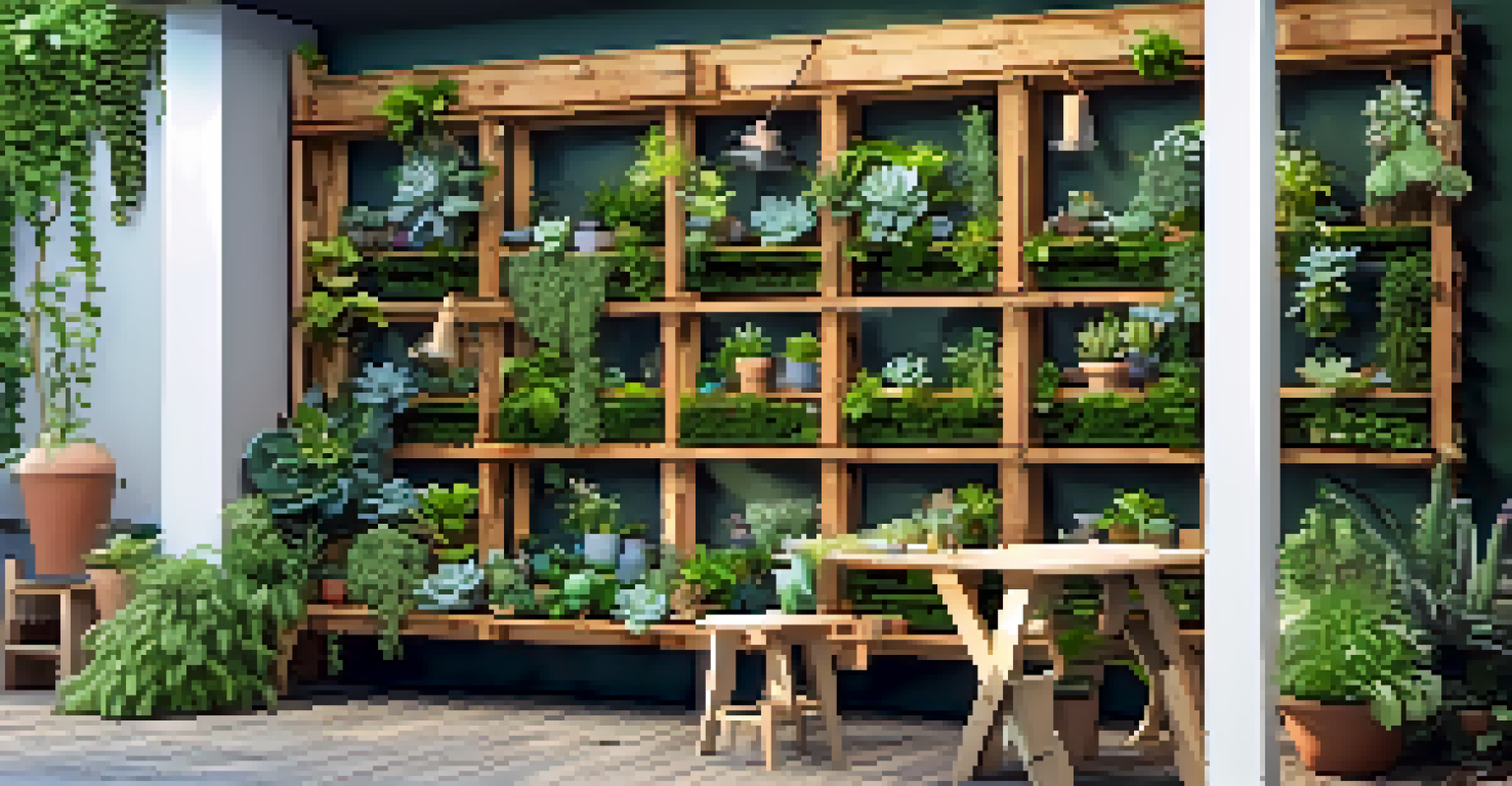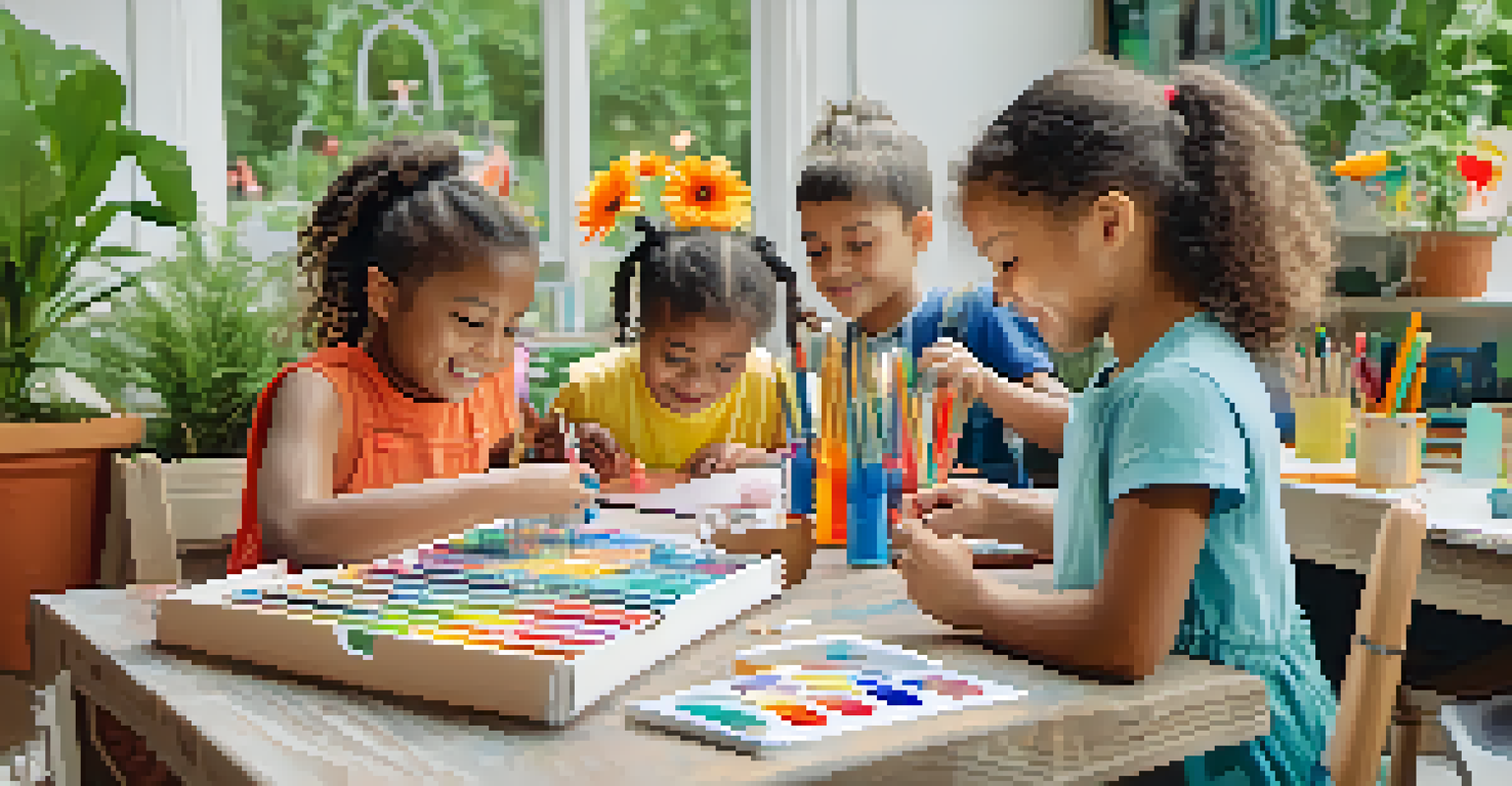Gardening with Kids: Fun Small Space Projects Together

Why Small Space Gardening is Perfect for Kids
Small space gardening is a fantastic way to introduce kids to the joys of gardening. It allows them to learn about plants without being overwhelmed by a large area. Plus, small spaces can be just as productive and fun! Children can easily manage a small garden bed or a few pots, making the experience enjoyable and rewarding.
Gardening is a way of showing that you believe in tomorrow.
In small spaces, kids can experiment with different plants, whether it’s herbs, vegetables, or flowers. This hands-on learning fosters curiosity and a sense of responsibility. When children see their plants grow from seeds to sprouting greens, they gain confidence and a connection with nature.
Moreover, small space gardening encourages creativity. Kids can decorate pots, choose colors, and even design their own layouts. This personal touch transforms gardening into an artistic endeavor, blending learning with imaginative play.
Starting with Container Gardening
Container gardening is one of the easiest ways to start small space gardening with kids. You can use anything from traditional pots to recycled containers like old buckets or tin cans. Letting kids choose their containers allows them to take ownership of their gardening project.

To make it even more fun, involve kids in selecting the plants. Whether they want to grow vibrant flowers or tasty herbs like basil and mint, having a say in the process keeps them engaged. Plus, container gardening allows for flexibility; you can move pots around to catch the best sunlight.
Small Space Gardening Engages Kids
Gardening in small spaces introduces children to plants and fosters curiosity, creativity, and responsibility.
Don't forget to teach kids about proper potting soil and drainage. This practical lesson in gardening basics can spark discussions about plant health and growth. Watching their plants thrive in containers will excite them and encourage further exploration.
Creating a Mini Herb Garden Together
A mini herb garden is a delightful and practical project for kids. Herbs are generally easy to grow and require minimal space, making them perfect for small areas. Plus, kids will love using the fresh herbs in cooking, connecting gardening with the culinary arts.
To plant a garden is to believe in tomorrow.
Begin by selecting a few easy-to-grow herbs like basil, chives, and parsley. Involve the kids in planting the seeds or seedlings, and discuss how each herb can be used in meals. This not only teaches them about gardening but also about healthy eating and the joys of cooking.
As the herbs grow, encourage kids to take care of them by watering and observing their growth. This responsibility fosters a sense of accomplishment and teaches the importance of nurturing living things. And, of course, the taste of homegrown herbs is unbeatable!
Building a Vertical Garden for Limited Spaces
Vertical gardens are a wonderful solution for small spaces, and they're a fun project to tackle with kids. By using wall-mounted planters or repurposing wooden pallets, you can create a beautiful green wall. This innovative approach not only saves space but also turns gardening into a creative art project.
Involve your kids in designing the layout and choosing plants that thrive in vertical setups, such as trailing vines or succulents. This gives them a chance to think critically about plant choices and aesthetics. Plus, they’ll be amazed at how vertical gardens can transform a plain wall into a lush oasis.
Hands-On Projects Enhance Learning
Activities like container gardening, DIY markers, and building a bug hotel provide practical lessons while making gardening fun.
As they help assemble the vertical garden, they’ll learn about plant care and maintenance. This project can spark an ongoing interest in gardening, and it’s an excellent way to instill environmental awareness by maximizing space and resources.
Crafting DIY Garden Markers Together
Creating DIY garden markers is a lovely and educational activity for kids. These markers help identify plants and add a personal touch to the garden. You can use materials like stones, popsicle sticks, or even old spoons for crafting unique markers.
Let your kids get creative by painting or decorating the markers with the names of the plants. This hands-on activity not only reinforces their learning but also allows them to express their artistic side. Plus, it’s a great way to improve their fine motor skills while having fun.
As the garden grows, these markers become a point of pride for the kids. They’ll love showing off their handiwork to family and friends, reinforcing their connection to the garden and the efforts they’ve put into nurturing it.
Exploring Nature with a Bug Hotel Project
Building a bug hotel is an exciting way to teach kids about the ecosystem while gardening. This small project encourages kids to explore nature and learn about beneficial insects. Plus, it adds an element of playfulness to your gardening activities.
You can create a bug hotel using items like bamboo sticks, pine cones, and straw. Involve the kids in gathering materials and assembling the structure. This hands-on experience teaches them about recycling and provides a habitat for helpful insects like ladybugs and bees.
Gardening Creates Family Traditions
Regular gardening activities can build cherished family traditions, instilling values of patience and a love for nature in children.
As they observe the bug hotel, kids can learn about the roles these insects play in the garden. This project fosters curiosity about wildlife, promoting respect and appreciation for nature. It’s a fun way to integrate science into your gardening adventures!
Harvesting and Enjoying the Fruits of Your Labor
One of the best parts of gardening with kids is the excitement of harvesting. Whether it’s fresh herbs, vegetables, or flowers, the moment of picking what they’ve grown is incredibly rewarding. It’s a tangible result of their hard work, and it reinforces the cycle of growing food.
Encourage kids to help with the harvesting process. Let them choose what to pick and explain the importance of doing it at the right time. This moment can lead to discussions about food preparation and the journey from garden to table, enhancing their understanding of where their food comes from.

After the harvest, consider cooking a meal together using the freshly picked ingredients. This not only celebrates their gardening efforts but also creates lasting memories. Sharing a meal made from their own garden is a wonderful way to bond and appreciate the benefits of gardening.
Making Gardening a Family Tradition
Building a family tradition around gardening can create lasting memories and valuable life lessons. Involving kids in gardening activities regularly fosters a love for nature and instills a sense of responsibility. It’s a wonderful way to spend quality time together while teaching important skills.
Consider setting aside specific days each month for gardening projects, like planting new seeds or maintaining the garden. This routine helps children anticipate and look forward to these activities, deepening their connection to gardening. Plus, it can become a cherished family ritual.
As they grow up, these gardening experiences may inspire kids to continue the tradition with their own families. The values of patience, nurturing, and hard work learned through gardening will stay with them for a lifetime. Ultimately, gardening becomes more than just an activity; it transforms into a legacy of love for nature.